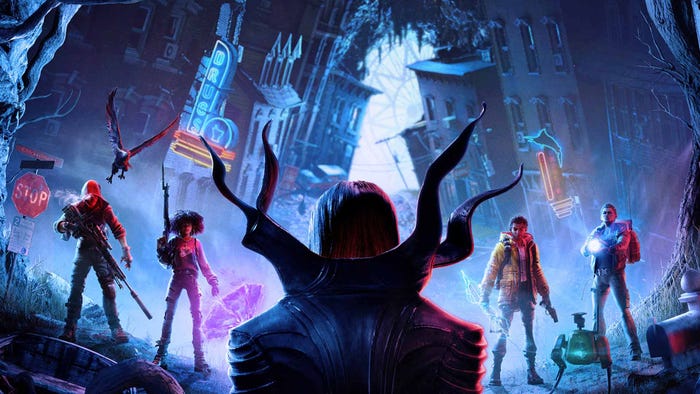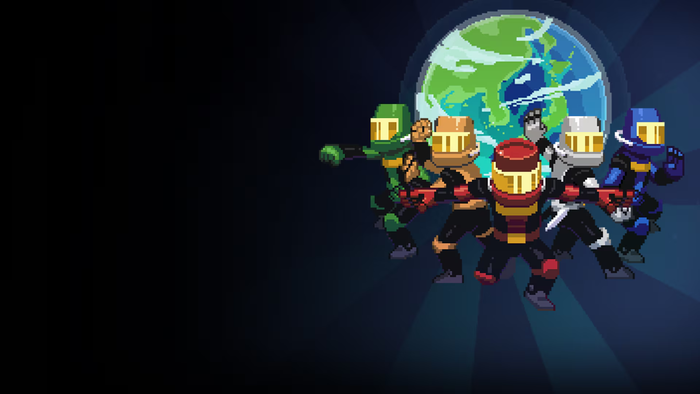
Featured Blog | This community-written post highlights the best of what the game industry has to offer. Read more like it on the Game Developer Blogs.
Getting to the point of points in games
Points have always been an important part of games. They can serve as a tangible way to measure competition. They can provide incentive and encourage replayability when playing solo.

When I was little, my sister and I used to spend hours playing with marbles. We would tie a piece of string together and then lay the newly created circle on the floor. Then we would put all of our marbles within the boundary of the string, each pick our own marble, and go to town taking turns and whacking the marbles out of the circle. Each normal marble was 1 point, and then, of course, those big ones were two solid points. After the last marble was out of bounds, we would count up our points, and then, as usual, my way better, younger sister would have more points than I did. (Though I’m pretty sure I could beat her now, if only I had some marbles on hand.)
Points have always been an important part of games. They can serve as a tangible way to measure competition, as in, say, a game of marbles. They can provide incentive and encourage replayability when playing solo.
Most interesting to me when designing and reviewing children’s interactive games, points can provide performance feedback and game clarification. Points can let children know if they are playing the game correctly, if they are improving. Sometimes, especially in the case of new and struggling readers, points can provide information that the text cannot. There’s only one catch: children need to understand the point system. Even a non-reader knows that getting three stars is better than getting one. A complex system and a bottomless pit of numbers, such as those seen in pinball games, may be great for alerting users of their high score, or placing them in a hall of fame, but it may rob children from the implicit language behind points.

HighScore
Large number point systems can have unintended effects on gameplay. They can be distracting, irrelevant, confusing, and they can even assume a level of curriculum that isn’t actually taught in the game. And if players cannot make sense of the points, they may choose to ignore them completely.
So, now let’s look closely at the points in two different games. Both are fun and can be played by preschool children, but each takes a different approach to points.
Jirbo Match, a memory-matching game that uses a point system that is more complex than the game itself. The content in this app is appropriate for a preschooler, as it promotes the concept of pairing and basic spatial cognition. The points used in this game, however, are more appropriate for a middle schooler, and the system is a mystery, at least to me. Points are awarded in seemingly random and large amounts, and taken away in the same way.
After only a few mismatches, my score was at negative 34 (Negative?! I haven’t been trying too hard, but I have yet to meet a preschooler who understands the concept of negative numbers) and then after only one correct match I magically made my way to 1139. This is an example of a point system that feels arbitrary as well as much too difficult for age appropriate children to grasp.
Now, take the silly game, Push the Button. Yes, the goal of the game is to see how many times you can push the button in a given timeframe. While I will not claim that this game will help your child become a Rhodes Scholar, I will say that it has a magnificently straightforward point system. For every touch of the button, the user receives one point.
It’s simple one-to-one correspondence. The point is given automatically, and for a clear purpose. If the user is not sure how to play, and starts poking around, the point system will alert him that he is being rewarded for button pushes. It is extremely replayable, and provides incentive for an otherwise useless gesture. And finally, children can be exposed to high order counting in this point system by watching the numbers go up incrementally by one point. (Incidentally, Barendregt, Lindström, Rietz-Leppänen, Holgersson, & Ottosson, in a 2012 conference paper called “Development and evaluation of Fingu: a mathematics iPad game using multi-touch interaction,” point out that using their fingers to count on a multi-touch interface, especially large sums, was very important to children’s counting skills.)
So, what’s the point? I recommend, the next time you find yourself designing a points system:
-Making sure that the points provide a clear incentive. The awarding of points should be easily understood and the points themselves should be clearly visible on screen.
-Encouraging replayability. Points should be simple enough for children to understand, while leaving room for the child to strive for improvement.
-Using math for the point system that is age-appropriate. If the game is for preschoolers, one-to-one correspondence, if applicable, will be easiest for children to understand.
-Using the points to provide performance feedback and gameplay clarification. Children should be able to use their points, or lack of points, as cues to what they are doing right, and what they are doing wrong. In the case of new or struggling readers, using points as a secondary means to communicate with the user may scaffold the curriculum.
Like my little game of marbles, point systems for children need to be simple. Children aren’t going to enjoy a game any less if the point system uses smaller numbers. I propose that it makes it more fun, giving context to the player’s reward. The ultimate goal for designers is to achieve the intended purposes of points, while de-emphasizing their unintended results. Call me crazy, but I like to get the point. Afterall, the challenge should be in the game’s content, not in its reward.
What do you think of this point? Feel free to email us at [email protected] or catch us on Twitter at @noCrusts.
Read more: http://kidscreen.com/2012/09/17/getting-to-the-point-of-points-in-games/#ixzz2ALMmySD8
Read more about:
Featured BlogsAbout the Author(s)
You May Also Like













